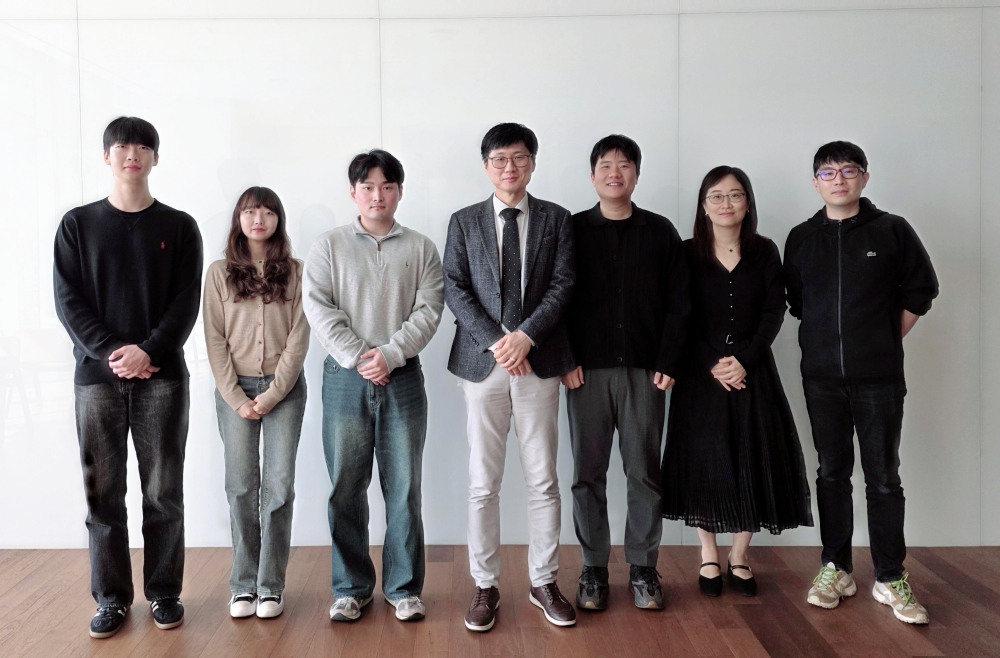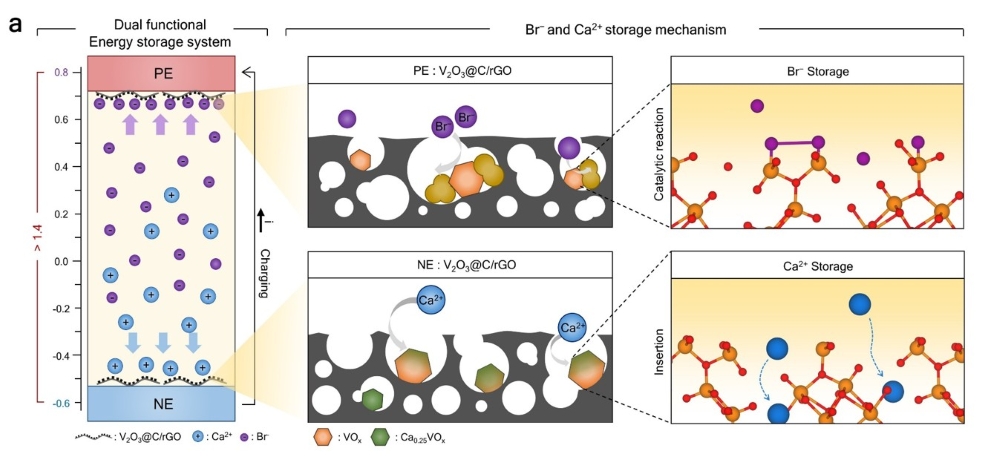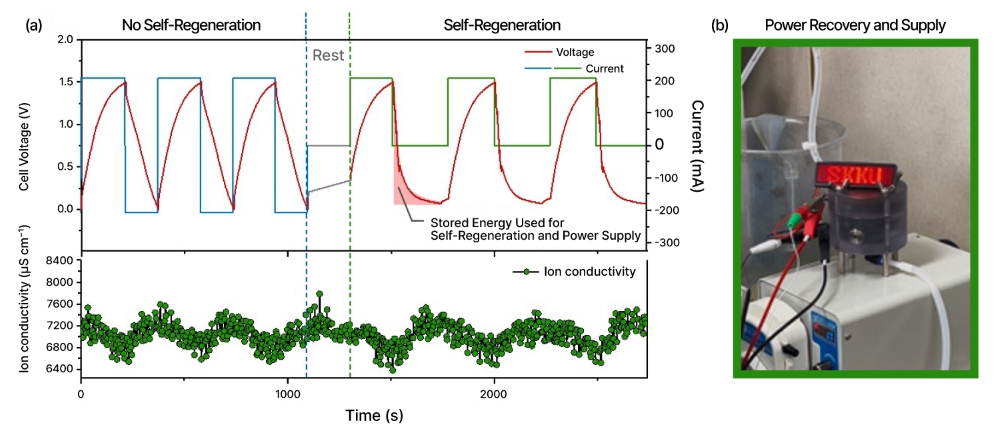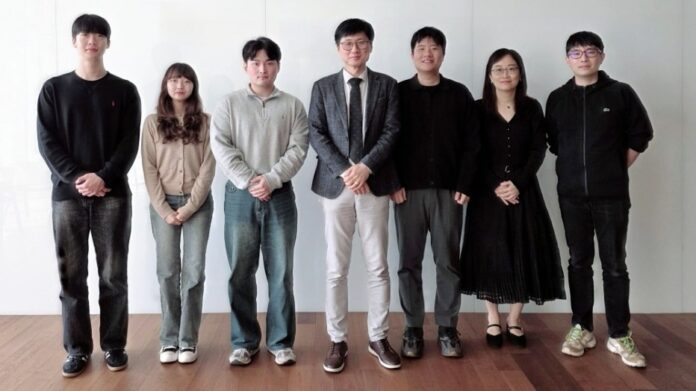Samsung Electronics has published a paper with Sungkyunkwan University (SKKU) on an electrochemical water treatment technology capable of power recovery in Joule, a world-renowned journal in the field of energy research.
Titled “Divalent and Halide Dual-Ion Storage of a Redox-Active Symmetric Cell for an Efficient Wastewater-Energy Nexus,” the paper presents a new paradigm for simultaneously implementing water treatment and energy storage while addressing the high power consumption and cost issues of existing electrochemical water treatment technologies. In particular, the research demonstrates that energy efficiency can be enhanced by supplying power generated from the electrode regeneration process to external devices — showing potential for wide application in various industries as well as daily life.
The study was jointly conducted by the Life Solution Team at Samsung Research of Samsung Electronics and the research team led by chemical engineering professor HoSeok Park at SKKU. Samsung participated in the entire process — from ideation to experiment design, implementation and validation — substantially contributing to proving the potential of the unique electrochemical water treatment technology.

An international academic journal that covers cutting-edge energy technologies, Joule was established by Cell Press in 2017 and is highly influential across physical chemistry, energy and fuels, materials science and other scientific fields. The paper’s publication marks a milestone for Samsung Research and SKKU.
Overcoming the Limits of Electrochemical Water Treatment
Electrochemical water treatment technologies are based on capacitive deionization (CDI), wherein voltage is applied to an electrode, causing ions in water to adsorb onto the electrode through electrostatic forces. This removes the ions from the water, purifying it. The method is especially effective against hardness ions (Ca²⁺, Mg²⁺) that reduce the detergency of cleaning agents and lead to scale buildup.
Unlike membrane-based water treatment technologies, which employ thin barriers to selectively allow or block the passage of liquid or gas microparticles, electrochemical technologies use no physical filters. As a result, maintenance and repair are easier, making these technologies an active area of research.
Despite their advantages, electrochemical water treatment technologies still face certain challenges. Additional power is consumed in the electrode regeneration process, and the required use of ion exchange membranes — which selectively allow ions with a specific electrical charge to pass while preventing their re-adsorption — remains an obstacle to commercialization due to increased costs.
To overcome these limitations, the Samsung Research-SKKU team developed a next-generation electrochemical water treatment technology that can be applied without ion exchange membranes. The technology offers low module composition costs, enables the removal of large volumes of hardness ions and can supply the power generated in the electrode regeneration process to external devices — paving the way for its potential as a multifunctional water treatment solution.
A New Approach to Ion Storage With a Next-Generation Electrode
The research team used a metal oxide-based nanostructure — a departure from conventional electrode materials — to create their electrode. Compared to conventional designs, this newly developed electrode demonstrated a 200% increase in ion storage capacity and a 20% improvement in storage rate.
Conventional electrode materials remove ions through electrostatic forces, requiring expensive ion exchange membranes to prevent re-adsorption during electrode regeneration. The new electrode, however, enables ions to be stored and spontaneously desorbed through direct electron exchange, eliminating the need for an ion exchange membrane.

The Potential To Evolve Into a Multifunctional Energy System
For repeated operation, existing electrochemical water treatment technologies also require electrode regeneration through the supply of additional power. During this process, sudden ion leakage can cause an overcurrent and reverse the polarity of the electrodes, making it impossible to utilize the stored energy.
The next-generation water treatment electrode developed by Samsung Research and SKKU is free from this issue, as spontaneous electrode regeneration can be achieved without the supply of additional power. Furthermore, it can recover stored energy and supply power to nearby devices. The team also found that the power required to operate an electrochemical water treatment module using this technology was 76Wh/kg — about half that of existing technologies.

Future Expansion to Home Appliances and Environmental Solutions
With its innovative new electrode, the electrochemical water treatment module developed by Samsung Research and SKKU has the potential to serve as a multifunctional unit that can treat water while supplying backup power for various home appliances that use water, such as dishwashers, washing machines and water purifiers. It is expected to play a key role as an innovative technology of the future.
Building on this study, Samsung plans to strengthen industry-academia collaboration and expand its research efforts to secure the core technologies that will shape the future of the environment and energy sectors. Through these initiatives, the company aims to accelerate the development of innovative solutions for a more sustainable tomorrow.


